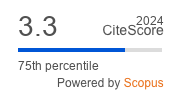Article | Open Access
Incorporation of Immigrants and Second Generations into the French Labour Market: Changes between Generations and the Role of Human Capital and Origins
| Views: | 4511 | | | Downloads: | 2732 |
Abstract: This article analyses the labour market incorporation of migrants and second-generation minorities in France. Using the 2013–2017 French Labour Surveys and the 2014 adhoc module, we focus on labour market outcomes—activity, employment, occupation and subjective overqualification—and measure the gaps between ethnic minorities and the majority group by origins, generation and by gender. In order to elucidate the mechanisms behind these gaps and explain ethnic disadvantages for immigrants, we take into account different factors, such as education, and factors linked to migration—duration of stay in France, language skills, foreign qualifications, nationality—with additional controls for family, socioeconomic and contextual characteristics. We also investigate the returns to higher education among second-generation minority members compared to the majority population. We show large differences by country of origins, generation and gender. Across generations, most minority members have made clear progress in terms of access to employment and skilled jobs, but ethnic penalties remain for the descendants of North-Africa, Sub-Saharan Africa and Turkey. In contrast, Asian second-generation men and women encounter slight advantages in attaining highly-skilled positions. Controlling for tertiary degrees even increases the gap with majority members mostly in access to highly-skills jobs.
Keywords: discrimination; employment; France; human capital; immigrants; labour market; returns to higher education; second generation; skilled workers
Published:
© Yaël Brinbaum. This is an open access article distributed under the terms of the Creative Commons Attribution 4.0 license (http://creativecommons.org/licenses/by/4.0), which permits any use, distribution, and reproduction of the work without further permission provided the original author(s) and source are credited.


